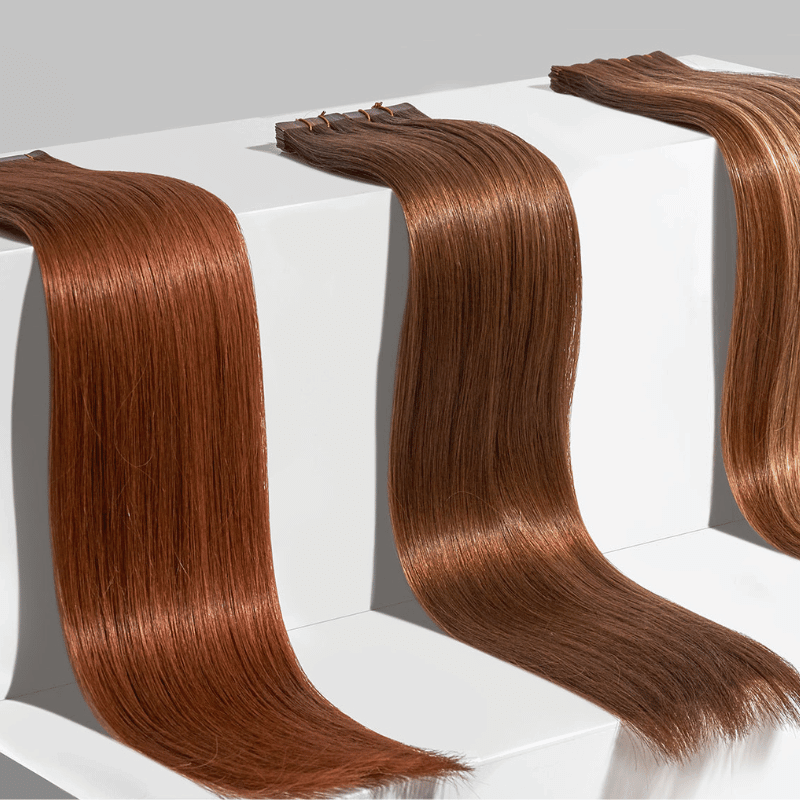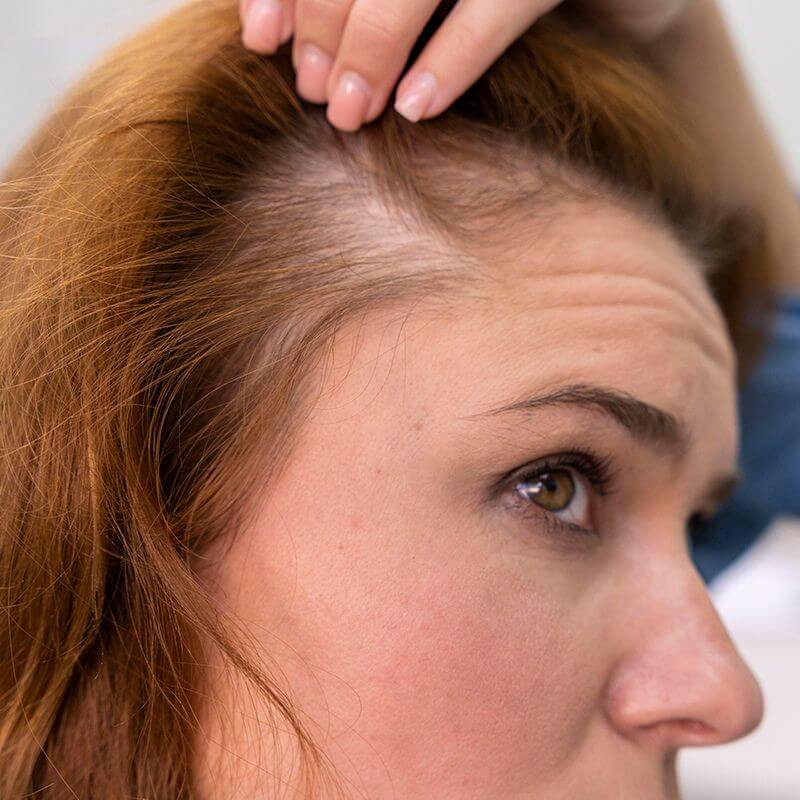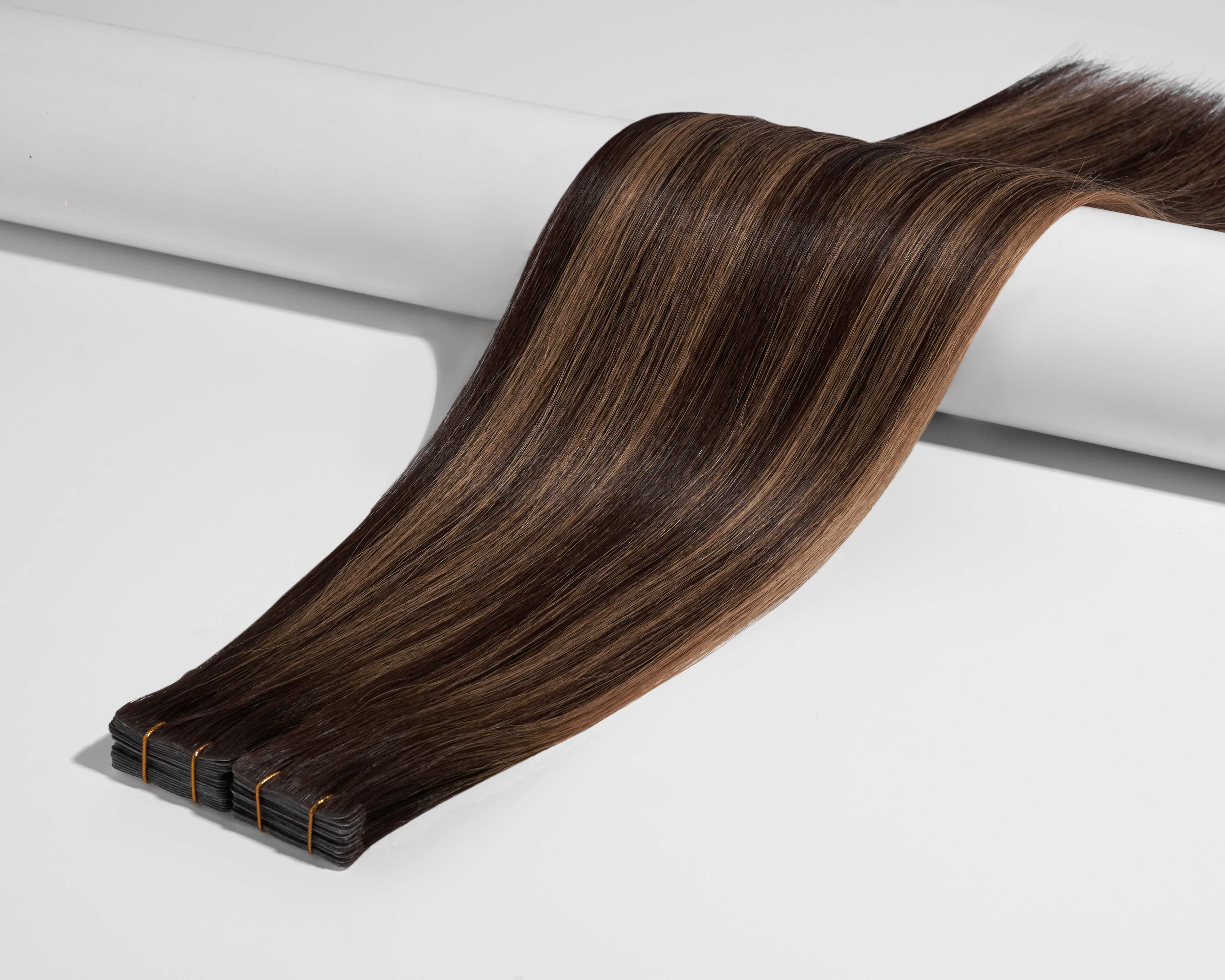
Ultimate Guide to Tape In Hair Extensions
Are you a salon professional new to the world of tape extensions, or maybe an interested client wanting to learn more before taking the leap? Wherever your interest in tape extensions comes from, education and knowledge will always be your first step.
At North Professional Hair, we are an industry-led brand with a host of hair professional experts on hand to provide the most current information to salons, stylists and end-result clients. We’re confident that tape extensions are the best extension method on the market and our job is to make you as confident as we are.
However, we also know that whilst we believe tapes are the best on the market, they may not be the best extension method for your clients’ or your hair’s needs.
In this educational article, you will learn about what tapes are, how they work, both their pros and cons and which clients they work the best for, alongside a couple of other quickfire FAQs. By the end, you will have a foundational understanding of tape extensions, ready to move forward on your tape journey.
What are tape in hair extensions?
Tape extensions are the hottest extension method on the market. They’re made of thin strips of human hair with medical-grade adhesive strips at the top, designed to be sandwiched between the natural hair for a smooth and invisible finish.
Tapes come in a variety of different colours and lengths to be customised to your and your client’s hair goals, which can be cut and styled at your convenience.
North Professional Hair tape extensions come in 3 styles: original, invisible and invisible root glaze.
The invisible line is designed to be virtually invisible when installed, ideal for clients with thin or fine hair, with the illusion that the extension is growing naturally from the client’s root.
The invisible root glaze line is designed with the same illusion as the invisible, but with added colour at the root, to blend the extension seamlessly with the client’s hair, for a natural, lived-in look.
How are tape in hair extensions installed and removed?
Tape extensions are sandwiched between a section of natural hair with medical-grade adhesive glue strips at the top of each extension. They are then secured using professional extension pliers. This process is then repeated to meet the needs of the client - some may want a full head of extensions, whereas others may just need areas filled.
The extensions are removed using an alcohol-based remover between the two sandwiched tapes, which are then slowly pulled away from the natural hair. In some cases, a solvent-based remover may be needed for additional support. The natural hair should then be washed to ensure all products are removed.
The extensions can then be refitted by attaching replacement tape strips to the tops of the extensions and reapplied using the same method as above.
Pros and cons of tape in hair extensions:
|
Pros |
Cons |
|
Lightweight |
Can become expensive |
|
Suitable for most hair types |
Needs regular refits |
|
Quick and easy application |
Takes longer to refit |
|
Least damaging |
Glue can cause reactions |
|
Versatile for different hair needs |
Needs to be fitted professionally |
|
Reusable |
Needs specific products for aftercare |
Which clients would benefit from tape in hair extensions?
Because tape extensions are so versatile, they’re the perfect extension method for most hair types.
For clients with thin or damaged hair, tape extensions are one of the safest methods to add length and volume without compromising the integrity of the natural hair. Tape extensions can also be used to fill in sparse areas around your client’s hair.
Clients with thick hair will need more tapes around their head, to blend seamlessly with the amount of natural hair they have. If weight is an issue for your client, why not consider thinning their hair before having their extensions installed? This way your client can achieve additional length without going overboard on volume.
However, clients with wave or curl patterns may struggle using tape extensions, as there isn’t currently a market for pre-waved or curled tapes. Tape extensions would need to be styled almost daily to match the client’s natural hair, or their natural hair would need to be straightened and styled to match the extensions
How long do tape in hair extensions last?
With proper aftercare, a tape extension fitting should last anywhere between 6 to 8 weeks before needing a refit.
If you continue to follow proper aftercare advice and treat the extensions as you would your own hair (remembering that they’re made of human hair), your tapes could last up to 12 months.
However, the longevity of the extensions really does depend on how the hair is cared for. Heat, styling, swimming and the colour of the hair are just a few factors that can affect the extension’s lifespan - something important to keep in mind.
How much do tape in hair extensions cost?
There are a lot of different factors to consider when investing in tape extensions. Tape extensions are both a time and financial commitment, so it is important to consider all costs before investing. Here are some things you will need to be aware of:
- Cost of the tape extensions
- Salon installation
- Regular maintenance (if needed)
- Specific hair care products
- Refits every 6 to 8 weeks
If you’re a client looking to start your extension journey, we recommend booking a consultation with a salon that specialises in tape extensions to discuss what their price points look like. Find a North certified salon, here!
If you’re a salon owner or industry professional curious about how to price your services, talk to our dedicated customer service team by calling 0161 791 2726.
How do you care for tape in hair extensions?
Tape extensions are made of human hair, so the hair needs to be treated as though it is your own. The adhesive also isn’t permanent, so you also need to care for the area around it to ensure great retention. Here are our top tips to care for your tapes:
- Always get your extensions fitted by a professional.
- Keep up with regular refits and maintenance.
- Brush from the bottom upwards, to prevent detangling damage and hair loss.
- Limit or avoid heat styling, where possible.
- Use heat protection products when heat styling.
- Use silicone-free hair care products, such as shampoos, conditioners and masks.
- Avoid swimming or wear swim caps and use specific products, such as Malibu C Swimmers Wellness Remedy, to prevent chlorine or saltwater damage.
What’s your next step?
You came to this article wanting to learn the basics of tape extensions. Whether you’re a potential new tape wearer or an industry professional wanting to widen your services, you have now learned what tape extensions are, their pros and cons, which clients will benefit the most from tapes, how much they cost, how long they last and how to care for them.
But what next?
North Professional Hair is an industry-led brand, built by hair professional experts who love tape extensions. But we’re not just a brand, we’re also a Habia Approved training provider! If you’re a salon professional looking to expand your services, why not book onto one of our North Training Days, here? You can also read more of our salon-based content, here!
If you’re a new client looking to invest in tape extensions, we have North-certified salons all over the UK! Click here to find a North salon in your area to book in your initial consultation.


